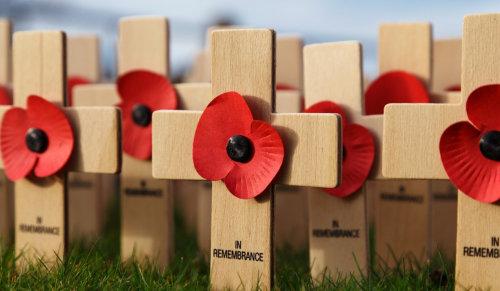This past weekend, I made a small donation to a veteran who was collecting funds for grants
that would benefit veterans and their families. In return, I received a red poppy.
Amid the parades, ceremonies, and moments of silence today, Memorial Day, the red poppy flower stands out for its poignant reminder of the cost of war. It has become an emblem of
remembrance, steeped in history and rich with significance.
The association of the poppy with war remembrance dates back to World War I. In the war-ravaged landscapes of Europe, particularly in the fields of Flanders, the resilient red poppies were among the first plants to bloom amidst the devastation.
These flowers caught the attention of Lieutenant Colonel John McCrae, a Canadian physician and soldier, who was inspired to write the now-famous poem, In Flanders Fields, in 1915. The opening lines of McCrae’s poem capture the stark contrast between the beauty of the
poppies and the horrors of war:
In Flanders fields the poppies blow
Between the crosses, row on row,
That mark our place; and in the sky
The larks, still bravely singing, fly
Scarce heard amid the guns below.
McCrae’s evocative words immortalized the poppy as a symbol of the blood spilled in war and the hope of
renewal.
The poem resonated deeply with many, including Moina Michael, an American professor and humanitarian. Inspired by McCrae’s words, she vowed to wear a red poppy as a way to remember those who had died in the war. Her efforts to promote the poppy as a symbol of remembrance were soon adopted by the American Legion in 1920. The
tradition quickly spread internationally, with the Royal British Legion adopting the poppy in 1921.
The poppy’s enduring significance on Memorial Day lies in its ability to convey a powerful message with simplicity and grace. It serves as a visible reminder of the ultimate sacrifice made by soldiers. Each poppy represents not only the
fallen but also the hope for peace and the resilience of life even in the aftermath of conflict.
Leading up to the holiday, volunteers from the American Legion and other veterans' organizations distribute artificial poppies, often made by disabled veterans as a form of therapeutic activity. These poppies are usually exchanged for
donations that support veterans' programs, making the act of wearing a poppy not only a gesture of remembrance but also a contribution to those who have served and survived.
Honoring the tradition of the poppy on Memorial Day is a simple yet profound way to participate in the collective act of remembrance. Here are a few ways to
incorporate the poppy into your Memorial Day observance:
1. Wear a Poppy: Pin a red poppy to your clothing as a symbol of remembrance and solidarity.
2. Support Veterans’ Organizations: Donate to groups like the American Legion that distribute poppies and support veterans.
3. Share the Story: Educate others about the significance of the poppy and the history behind it.
Create a Memorial Display: Incorporate poppies into your Memorial Day decorations, whether in your home or at community events.
The red poppy is more than just a flower; it is a symbol of sacrifice, resilience, and hope. Today, as we remember those who gave their lives in service to their country, the poppy serves as a poignant reminder of the cost of freedom and the enduring human
spirit.












